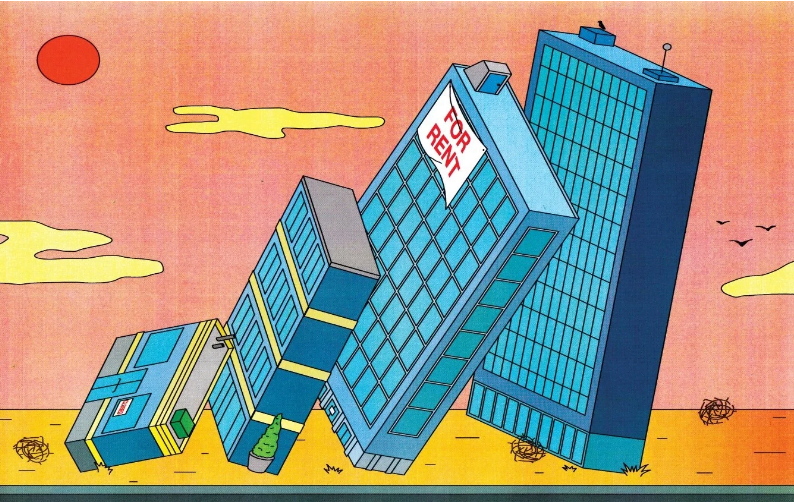The COVID-19 pandemic has deeply affected many aspects of life, including the commercial real estate market. However, as seen throughout history—from the Black Plague to the discovery of penicillin—times of crisis often lead to expansion, innovation, and technological advancement. The post-pandemic recovery presents opportunities to focus on social justice, health, remote work, and economic improvements. Although the pandemic negatively impacted various commercial real estate sectors, it has also opened doors to new possibilities, such as lower rental prices and increased use of online communication for transactions. So, while the challenges are real, the future of commercial real estate isn’t entirely bleak.
Recovery and Commercial Trends in 2021 and Beyond
Commercial real estate will gradually recover from the pandemic’s effects, but it won’t be without setbacks. The following trends are expected to influence the market in 2021 and beyond:
- Asset Class Winners
Retail, hotel, and office spaces continue to lose value by 5% to 10%. However, industrial properties, data centers, life science facilities, and single-family homes are gaining in value. The lower transaction volume in favorable sectors may result in higher pricing due to increased competition among investors. - Low Interest Rates in 2021
The Federal Reserve is likely to maintain a monetary policy that keeps interest rates low throughout the year. This approach will benefit commercial real estate borrowers and positively impact economic recovery. - Population Decline in Major Cities
Cities like New York, Chicago, and San Francisco will likely experience further population declines. High living costs and the rise of remote work have pushed many people to seek more affordable locations with better lifestyles, such as Austin, TX, and Mount Pleasant, SC. - Rise of Alternative Assets
As investors seek resilience during an uneven recovery, commercial real estate exposure will increase. High equity valuations and negative yields from government bonds are expected to push more investors toward alternative assets like commercial real property. - New Opportunities for Office Spaces
Although remote work has led to a decline in the use of office spaces, new opportunities may arise. Companies are re-evaluating their office needs, and vacancies in high-traffic areas may attract businesses looking to expand. This period of experimentation could lead to creative uses for office spaces.
Silver Linings in Commercial Real Estate
Despite the challenges, the pandemic has presented a silver lining for the commercial real estate market. According to Lawrence Yun, chief economist of the National Association of REALTORS®, personal income is up 10.7% year over year, and personal savings have skyrocketed by 302%. As a result, consumers are expected to inject significant capital into the economy. People may be eager to spend their savings, especially on properties that have seen reduced value due to the pandemic.
Moreover, the interest rates for commercial real estate will be lower than in previous years, creating attractive opportunities for investors. The combination of lower property values and affordable borrowing costs makes this a prime time for people to invest in commercial real estate.
Opportunities in Office Vacancies and Digital Real Estate
Office vacancies present both a challenge and an opportunity. Many offices have remained empty or partially occupied due to remote work. However, companies are experimenting with how to organize their workspaces. As a result, the office sector could see a rebound as businesses find innovative ways to use commercial spaces.
Meanwhile, industrial warehouses and land continue to be bright spots for commercial real estate, with sales volumes increasing 2% and 3% year over year in the first quarter of 2021. Additionally, the digital real estate sector—which includes cell towers, data centers, and logistics facilities—has performed exceptionally well, offering another area of growth.
Conclusion: A Bright Future for Commercial Real Estate
In summary, the office sector still holds potential, especially with interest rates near zero, unemployment rates dropping, and vaccinations on the rise. Infrastructure investments may also contribute to the recovery of commercial real estate. Although the future depends on various factors, including those related to the virus, opportunities for commercial real estate investors are growing. Signs point to a possible rebound for the sector in 2021 and beyond.
Even after outlining all the information above, writing a letter of intent (LOI) can still seem daunting. That’s why the Leveraged CRE Team at Commercial Properties, Inc. is here to help locate commercial space for lease and assist in using a letter of intent to land such space. Contact us at (480) 330-8897 or send us an email at request@leveragedcre.com.
Need assistance with your 1031 Exchange or DST? We’ve got you covered!
We’ve prepared a comprehensive, free e-book designed to guide you in achieving your long-term business goals or acquiring that dream property you’ve been eyeing.
Meet The LeveragedCRE Investment Team
Phill Tomlinson and Eric Butler are seasoned commercial real estate brokers with over 44 years of combined experience. They lead the LeveragedCRE Investment Team at Commercial Properties, Inc. (CPI) in Scottsdale, Arizona, specializing in investment sales and tenant/landlord representation across the Phoenix and Scottsdale submarkets.
The team leverages their extensive knowledge and expertise to help investors and property owners maximize their returns and navigate complex real estate transactions with confidence.
Stay informed with the latest in Commercial Real Estate strategies designed to enhance your income property investment results by bookmarking www.leveragedcre.com. Let us help you stay ahead in the market!


